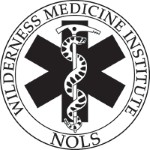Learn to save a life in one hour
Pump and blow. These are the basic tenets of CPR. Sounds simple, and it is, yet millions of Americans are not trained.
Why does this matter? Because only 1 in 10 people who suffer cardiac arrest outside of a hospital setting will survive. That statistic is worth repeating: 1 in 10 survive, meaning 9 of 10 will DIE.
This is an abysmal number, and the only way to improve upon it is for Americans to learn CPR.
In response to that urgent need, the small, student-run EMS service at Emory University here in Atlanta, Georgia, recently held the largest CPR training event in history.
"We trained over 600 people in 3 days," said Josh Rozell, chief of Emory EMS. "If we had only trained one person in CPR and that person had saved a life, we would be successful."
They're using a new technique called CPR Anytime -- a kit that's available to anyone for about $30 from the American Heart Association -- that employs a pay-it-forward-like idea.
In a one-hour session, you learn how to perform CPR using this kit. You then take the kit home and use it to teach five of your friends. Each of them can borrow your kit or buy one of his or her own, and share it with five friends, and so on. The number of trained life savers increases exponentially.
In fact, in Atlanta, a city with one of the worst cardiac arrest survival rates, Mayor Shirley Franklin employed this technique to get more than 30,000 city employees trained in CPR in about six months.
I can't save you the $30 it costs to get this kit, but, as an EMT myself, I can at least share the basics of CPR with you here, with the help of the American Heart Association's Heartsaver CPR instructions. Who knows? It could help you save a life, but it does not replace a CPR course!
Remember, you should not attempt to do CPR if the victim is conscious or breathing or if doing CPR puts your life in danger (for example, on the side of busy a highway).
Step 1: Shake and shout
If you see someone collapse or lying on the ground motionless, make sure they're not just asleep. Sounds silly, but they won't be too happy with you if they are just asleep, and you start pumping on their chest, so just shake them and shout "Hey! Can you hear me? Are you OK?"
Step 2: Call 911
If the victim does not respond, call 911. This should go without saying, but you'd be surprised how easy it is to forget this step in the heat of the moment.
Step 3: Open the airway
Oftentimes, when unconscious, a person's tongue can obstruct the airway. The easiest way to remedy this is to simply tilt the head back. So, place one palm on the person's forehead, and 2 fingers from the other hand under their chin, and tilt backwards gently.
Step 4: Check for breathing
Spend about 10 seconds looking at the victim's chest, listening to hear whether he or she is breathing, and attempting to feel the person breathing on your cheek.
Step 5: Rescue breaths
With the victim's head tilted slightly, pinch the nose and give 2 breaths (1 second each) into the victim's mouth.
Step 6: Begin chest compressions
Quickly move or remove clothes from the front of the chest that will get in the way of doing compressions. Place the heel and palm of one hand on the center of the victim's chest, directly between the nipples. Put the heel of your other hand on top of the first hand and push straight down on the chest 1.5 to 2 inches with each compression. Push hard and fast, at a rate of 100 compressions a minute.
Step 7: 30:2 ratio
Do 30 chest compressions, followed by two more breaths. Continue to do cycles of 30 compressions and two breaths until the victim regains consciousness, someone arrives with an automated external defibrillator, or AED (you may have seen these in airports, shopping malls and other public spaces) or professional help arrives.
These are the basic steps, and they can help you save lives. These instructions by no means replace a CPR course, and I would encourage you to find a course in your area by clicking here, or purchase a CPR Anytime kit for you and your family by clicking here.
I'm curious... Would you be more likely to learn CPR if you could do it in the comfort of your own home for only a few bucks?

